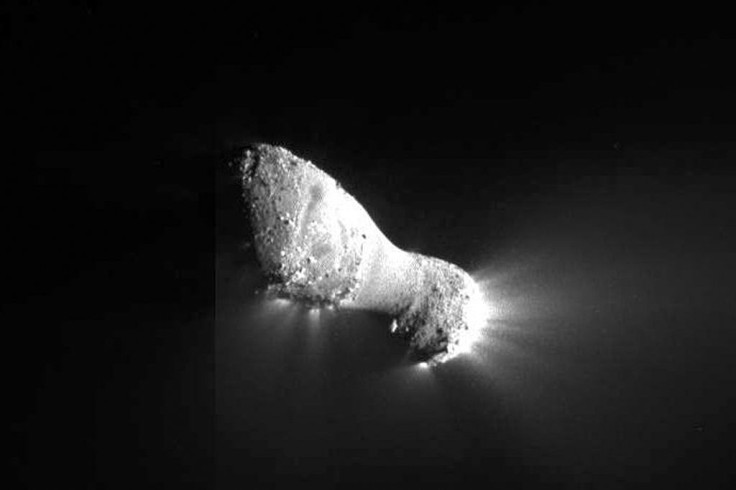Mysterious 'Oumuamua May Be 'Monstrous' Comet Corpse Amid Harvard Scientist Alien Spacecraft Claims

The mysterious interstellar object 'Oumuamua may be the first known visitor from beyond our solar system, but scientists are still trying to unlock its secrets. One scientist recently proposed that what some thought to be an alien spacecraft may actually just be the remains of a comet.
In a new, unpublished paper posted on arVix.org, Zdenek Sekanina, an astronomer at NASA's Jet Propulsion Laboratory, explained why the 'Oumuamua could be a "monstrous fluffy dust aggregate" produced by a comet. The idea is apparently based on previous observations that comets break down as they drift closer to the Sun.
Based on the observation, Sekanina wrote that "there are reasons to believe that it suffered the same fate as do the frail comets."
Scientists first detected the 'Oumuamua back in October 2017 as it whizzed through the solar system. This was the first interstellar object astronomers ever spotted, though there may have been thousands which had gone unnoticed. Among the many explanations scientists have proposed regarding what exactly 'Oumuamua is are comet, asteroid, ripped-up planetesimal or even alien spacecraft.
Since scientists only spotted 'Oumuamua when it was already on its way out of the solar system, there is a possibility that it may have changed in appearance during its journey. At the moment, it appeared reddish, long and thin, but it could have looked entirely different before it came under the radar.
Sekanina's paper compared 'Oumuamua to faint comets previously observed. These comets usually start to break apart when they come within a quarter of the Earth's distance from the Sun. Upon their death, the comets experience an "outburst" that triggers their disintegration.
Sekanina specifically pointed out the comet C/2017 S3 (Pan-STARRS) that came from the Oort Cloud, which surrounds our solar system. From data gathered about the comet, observers were led to believe that its remains may have become "a monstrous, extremely fluffy aggregate of loosely bound dust grains" before it came to its closest approach to the Sun.
The paper proposed that 'Oumuamua may have been the result of a comet's death -- a clump of remnants instead of the solid body scientists thought it to be when they first spotted it. According to Sekanina, the 'Oumuamua may have experienced an outburst prior to being observed, and this disguised its original appearance.
Meanwhile, Avi Loeb, the Harvard University professor who proposed that the 'Oumuamua may be alien technology, recently announced that he stands by his original claim. Loeb and his co-author Shmuel Bialy previously wrote a paper proposing that ‘Oumuamua is a "lightsail, floating in interstellar space as a debris from an advanced technological equipment."
Despite many naysayers, Loeb told the Washington Post that he doesn't have any plans to back down unless someone proves him wrong.
“Many people expected once there would be this publicity, I would back down,” Loeb said. “If someone shows me evidence to the contrary, I will immediately back down.”
© Copyright IBTimes 2024. All rights reserved.





















